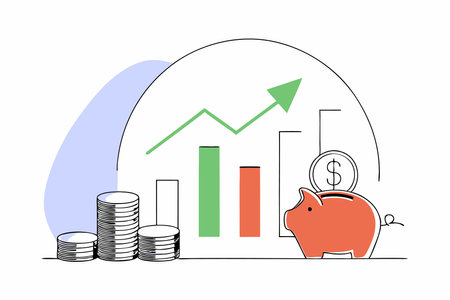1. What Are the Debt Snowball and Debt Avalanche Methods?
If you’re ready to tackle your debt, you’ve probably heard about two popular strategies: the Debt Snowball and the Debt Avalanche. Both are tried-and-true ways to pay down debt, but they take different approaches. Let’s break down what each method is all about, how they work, and why some people prefer one over the other.
Debt Snowball Method
The Debt Snowball is all about momentum and motivation. With this method, you list all your debts from the smallest balance to the largest—regardless of interest rate. You make minimum payments on everything except the smallest debt. Throw any extra money you have at that smallest balance until it’s paid off. Once it’s gone, roll what you were paying into the next-smallest debt, and keep going. The idea is that those quick wins help you stay motivated as you see debts disappear one by one.
How the Debt Snowball Works:
- List debts from smallest to largest balance
- Make minimum payments on all debts except the smallest
- Pay as much as possible toward the smallest debt
- When it’s paid off, repeat with the next-smallest debt
Why People Like It:
The main draw is psychological—paying off a bill completely feels good! For many folks, seeing progress keeps them engaged and less likely to give up.
Debt Avalanche Method
The Debt Avalanche is focused on math and efficiency. Instead of looking at balances, you list your debts by interest rate, highest to lowest. Make minimum payments on everything, but throw every extra dollar at the debt with the highest interest rate first. When that one is gone, move to the next-highest interest rate. This approach saves you more money in interest over time.
How the Debt Avalanche Works:
- List debts from highest to lowest interest rate
- Make minimum payments on all debts except the one with the highest rate
- Pay as much as possible toward that high-interest debt
- Once it’s gone, target the next-highest rate
Why People Like It:
This method can get you out of debt faster and save you more in interest charges—great for anyone who wants to maximize their dollars.
Side-by-Side Comparison Table
| Debt Snowball | Debt Avalanche | |
|---|---|---|
| Main Focus | Smallest balances first | Highest interest rates first |
| Mental Approach | Motivation & quick wins | Mathematical efficiency |
| Saves More Money? | No (usually costs more in interest) | Yes (less total interest paid) |
| Keeps You Motivated? | Often easier for many people | Takes longer for early wins |
| Best For… | If you need encouragement along the way | If saving money on interest is your top priority |
Both methods can help you become debt-free—it just depends on which style fits your personality and goals best.
2. Pros and Cons of the Debt Snowball Method
The Debt Snowball Method is a popular debt repayment strategy in the United States, especially for people who want quick wins and motivation along their debt-free journey. But like any financial approach, it has its upsides and downsides. Let’s take an honest look at how this method works, its impact on motivation, speed of results, and how much interest you might end up paying compared to other methods.
How the Debt Snowball Method Works
With the Debt Snowball, you list all your debts from smallest balance to largest—ignoring the interest rates. You focus on paying off your smallest debt first while making minimum payments on the rest. Once that first debt is gone, you “roll” what you were paying onto the next smallest debt, creating a snowball effect that builds momentum as you go.
Advantages of the Debt Snowball Method
- Boosts Motivation: By quickly knocking out small debts, you get fast wins that keep you motivated and engaged in your debt payoff plan.
- Simplifies Your Finances: Fewer debts mean fewer bills to juggle each month. The process gets easier as you go.
- Easy to Follow: You don’t need to do complicated math or analyze interest rates. Just focus on one debt at a time.
- Popular Success Stories: Many Americans have successfully used this method and shared their stories online and in personal finance communities.
Disadvantages of the Debt Snowball Method
- Pays More Interest Overall: Since you’re not focusing on high-interest debts first, you may end up paying more in total interest over time.
- Might Take Longer for Big Debts: If your largest debts have high interest rates, they’ll stick around longer and rack up more charges before you get to them.
- Not the Most Cost-Efficient: For people who care most about saving money on interest, this method isn’t mathematically optimal.
Debt Snowball: Quick Comparison Table
| Debt Snowball | Debt Avalanche | |
|---|---|---|
| Main Focus | Smallest balances first | Highest interest rates first |
| Motivation Boost | High (fast wins) | Lower (results take longer) |
| Total Interest Paid | Tends to be higher | Tends to be lower |
| Simplicity/Ease of Use | Easier, less math involved | A bit more complex to track |
| Cultural Popularity (U.S.) | Very popular (endorsed by many financial coaches) | Less talked about outside expert circles |
The Bottom Line on Debt Snowball’s Pros & Cons (Without Concluding!)
The Debt Snowball Method can be a powerful tool for those who need encouragement and straightforward steps to tackle their debts. However, it’s important to weigh these motivational benefits against potentially higher overall costs due to extra interest. Whether or not it’s right for you depends on your priorities—whether it’s staying motivated or minimizing what you pay in the long run.

3. Pros and Cons of the Debt Avalanche Method
What is the Debt Avalanche Method?
The Debt Avalanche method is a debt repayment strategy where you focus on paying off your debts with the highest interest rates first, while making minimum payments on all other debts. Once the highest-interest debt is paid off, you move to the next highest, and so on. This approach aims to save you the most money in interest over time.
Benefits of the Debt Avalanche Method
- Financial Efficiency: By tackling high-interest debts first, you reduce the total amount of interest you pay over time. This means more of your money goes toward actually reducing your debt balance.
- Faster Payoff (in some cases): Since less money is wasted on interest, you may be able to get out of debt faster compared to other methods, especially if your largest balances have lower interest rates.
- Logical Approach: For people who are motivated by numbers and logic, this method makes perfect sense—it’s all about minimizing cost and maximizing results.
Drawbacks of the Debt Avalanche Method
- Staying Motivated Can Be Tough: If your highest-interest debt also has a large balance, it might take a long time before you see any real progress or get to celebrate paying off an account. This can be discouraging for some folks.
- No Quick Wins: Unlike the Snowball method where you might pay off smaller debts quickly and feel accomplished, the Avalanche method doesn’t always provide early victories.
- Requires Discipline: You need to stay focused and stick with the plan, even if progress feels slow at first.
Debt Avalanche: At a Glance
| Factor | Debt Avalanche |
|---|---|
| Primary Focus | Highest interest rate first |
| Savings on Interest | Maximum savings over time |
| Time to Payoff | Pays off faster (if disciplined) |
| Motivation Level Needed | High (progress can feel slow) |
| Best For | Those who want financial efficiency and can stay motivated without quick wins |
Is the Debt Avalanche Right for You?
If you’re someone who values saving money in the long run and you don’t mind waiting a bit longer for that first “paid-off” feeling, the Debt Avalanche could be a smart choice. Just remember that it requires patience and commitment—but the reward is often a lower total cost to become debt-free!
4. Which Method Fits Your Financial Personality and Goals?
Choosing between the debt snowball and debt avalanche methods isn’t just about the math—it’s also about how you think, feel, and act with money. Here’s some guidance to help you figure out which payoff strategy matches your habits, emotional triggers, and long-term financial objectives. Let’s break it down with some everyday American scenarios so you can see what might work best for you.
Understanding Your Money Habits
Think about how you usually handle your finances. Are you someone who loves quick wins and needs regular motivation? Or do you prefer knowing you’re saving the most money in the long run—even if progress feels slow at first?
| Financial Personality | Debt Snowball | Debt Avalanche |
|---|---|---|
| The Motivated Starter | Gets pumped by checking off small debts quickly; enjoys visible progress (like seeing fewer bills on the fridge) | Might lose steam if bigger debts take too long to pay down, even if saving more in interest |
| The Analytical Saver | May get frustrated by paying more interest over time, even with early wins | Loves maximizing savings; stays focused by tracking interest saved on spreadsheets or apps |
| The Busy Parent/Professional | Prefers simplicity—just pay off the smallest one first, then move on; appreciates quick results amid a hectic schedule | Needs reminders of big-picture savings but may struggle with patience as balances drop slowly at first |
| The Emotional Spender | Finds motivation in closing accounts fast, helping build confidence to avoid future debt | Might need extra encouragement to stick with the plan when progress is less visible early on |
Setting Your Financial Goals
Your goals play a huge role in picking a strategy. Here are some common U.S.-based examples:
- If you want to buy a home soon: Paying off smaller debts quickly (debt snowball) can boost your credit score faster and free up cash flow for a down payment.
- If you’re focused on retiring early: The debt avalanche method helps save as much as possible on interest, leaving more money for investments later.
- If stress keeps you up at night: Knocking out small debts can provide mental relief—even if it costs a little more in interest.
- If you’re tackling student loans or high-interest credit cards: Avalanche targets those high rates first, potentially saving thousands over time.
Ask Yourself These Questions:
- Do I need quick victories to stay motivated?
- Am I comfortable waiting longer for bigger financial rewards?
- Is my main goal to save money on interest or to simplify my monthly budget?
- How do I react emotionally when my debt doesn’t seem to budge?
- What other financial goals am I juggling right now—like building an emergency fund or saving for college?
A Relatable Scenario: Meet Sarah and Mike from Ohio
Sarah works two jobs and gets a thrill every time she pays off a bill. She chose the debt snowball method because she needed fast results to keep her spirits high. Mike, on the other hand, loves crunching numbers. He picked the avalanche method—he didn’t mind that it took longer to pay off his first loan because he knew he’d save more money overall. Both are winning—but in ways that fit their personalities.
5. Tips to Get Started and Stick With Your Debt Payoff Plan
Action Steps to Launch Your Debt Snowball or Avalanche
Getting started with your debt payoff journey can feel overwhelming, but breaking it down into simple steps can make it much more manageable. Whether you choose the debt snowball (paying smallest balances first) or the debt avalanche (tackling highest interest rates first), these actionable strategies will help you hit the ground running:
Step-by-Step Action Plan
| Step | Debt Snowball | Debt Avalanche |
|---|---|---|
| 1. List Your Debts | Order by balance (smallest to largest) | Order by interest rate (highest to lowest) |
| 2. Minimum Payments | Make minimum payments on all debts except your target debt | |
| 3. Extra Payments | Apply extra funds to the smallest balance first | Apply extra funds to the highest-interest debt first |
| 4. Track Progress | Update your list each month as debts are paid off and move to the next target debt | |
| 5. Celebrate Milestones | Acknowledge each debt you pay off with a small (budget-friendly) reward | |
Tools and Resources for Success
- Budgeting Apps: Try tools like Mint, YNAB (You Need A Budget), or EveryDollar to monitor spending and keep your goals visible.
- Debt Payoff Calculators: Use free online calculators from sites like NerdWallet or Bankrate to project your payoff timeline and see how extra payments speed things up.
- Automatic Transfers: Set up automatic payments for at least your minimums, plus scheduled extra payments toward your target debt so you never miss a due date.
- Accountability Partners: Share your goal with a trusted friend or join an online community like Reddit’s r/personalfinance for encouragement and advice.
- Printable Trackers: Hang a visual tracker (debt thermometer or payoff coloring sheet) somewhere you’ll see it daily for motivation.
Troubleshooting Common U.S. Obstacles
Tackling Fluctuating Income
- Create a “bare bones” budget based only on your lowest expected monthly income.
- If you get extra income from side gigs, bonuses, or overtime, direct those windfalls straight toward your current target debt.
- Build a small emergency fund ($500–$1,000) before focusing all resources on debt, so unexpected expenses don’t derail your plan.
Avoiding Lifestyle Inflation
- If you get a raise or new job with better pay, commit ahead of time to allocate most of that increase toward debt rather than increasing spending.
- Avoid “keeping up with the Joneses.” Remind yourself that every dollar used for early debt payoff is building future financial freedom.
- Create small budget categories for affordable fun—this helps prevent burnout without sabotaging your progress.
Staying Motivated for the Long Haul
- Review Your Wins: At the end of each month, look at how much closer you are to being debt-free—it really adds up!
- Refresh Your Why: Write down why becoming debt-free matters to you. Read it when temptation strikes or motivation dips.
- Pace Yourself: Remember, slow and steady wins the race. If you hit a setback, don’t quit—adjust and keep moving forward!


